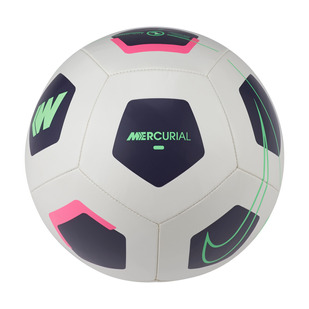How to properly choose your child’s soccer equipment
So you have a new soccer player in the family! But now you’re asking yourself, how do I select the right shoes? And what’s the right kind of soccer ball? We have all the tips you need to help you buy soccer shoes, a sports bag and a ball for your little champ.
The basics of soccer shoes
First, you need to know that shoes come in three materials: PVC, synthetic leather and full-grain leather. Although very affordable, PVC is also not as durable. It’s an acceptable choice for very young players or for their first season. Synthetic leather shoes, in the mid-range, are preferred by players with a little more experience, because they give better contact with the ball. They also last longer. Full-grain leather is offered only in adult sizes, as it’s meant for advanced players.
The soles of soccer shoes also come in different materials: rubber (the least expensive, perfect for beginners and games on natural grass); polyurethane (all fields, for more advanced players); and turf soles (for synthetic fields). Young players just starting out may prefer turf soles because their cleats aren’t as sharp, so they dig into the grass less. This way, they won’t be tripping over themselves!
And be sure not to make this mistake: buying a larger size, hoping the shoes will last for several seasons, means risking injuries. Shoes that are too big may even fly off during a kick! The right way to measure soccer shoe size is to see if an adult finger (maximum 1.5 cm) can fit behind the heel when your child is standing.
The soccer ball: a key choice
Neither too big nor too small, choose a ball according to the player’s age. Here are the sizes to choose from:
- Size 3: for players under 8 years old
- Size 4: for players between 8 and 12 years old
- Size 5: for players 13 and over
How do you judge a good soccer ball? Surprise, it’s all in the seams! For an entry-level ball, the seams are on the outside. A ball with the seams inside is mid- to high-end depending on its finish: top-quality soccer balls have sealed inner seams. Those certified by FIFA/IMS will all have this feature, which guarantees a longer lifespan and less deformation.
Don’t forget the shin guards
Shin guards are essential protection for soccer players, and they come in two formats: with or without ankle protection. Full-length models offer more protection, but they reduce the player’s mobility, which is why more advanced players prefer models without ankle protection.
Whichever guards you choose, to ensure maximum protection make sure the shins are well covered and that your child can move easily. If the shin guards are too long, they will limit their range of movement, while guards that are too small will not cover enough area. They must always snugly fit the leg in both width and height, or they will slide around.
The perfect sports bag
The final step is to find the ideal sports bag. Make sure you get a bag that’s the right size for your little one, so that they’ll be proud to carry it around. In addition to their soccer outfit and equipment, consider slipping these items inside: a towel, shower gel, a plastic bag for any items that get dirty, a change of clothes and a snack.
There you go! Your little champ is now properly equipped and ready to become the next Ronaldo as they begin learning the joys of soccer. And who will be in the front row to cheer them on? Why, you will, of course!











